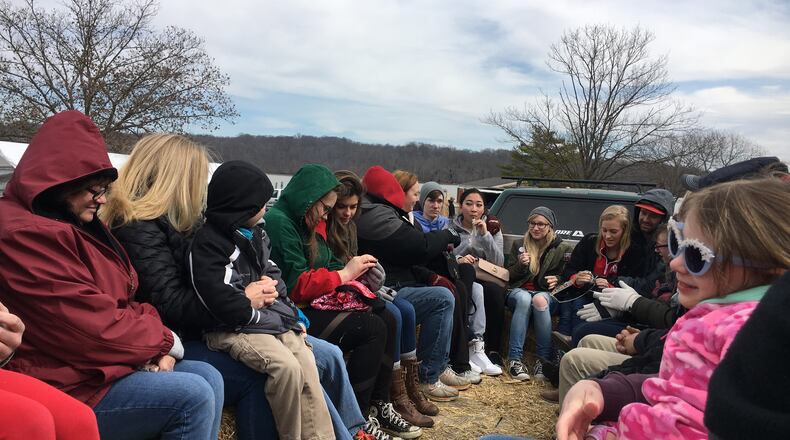Richards told tour groups, who arrived in the woods by hay rides, almost any tree can provide sap that makes tasty syrup, with the nasty notable exception of sycamore trees, according to the late naturalist and wild-food proponent Euell Gibbons.
But maple trees are used because they have the highest sugar content, about 2 percent (with 98 percent water), people were told during the festival. Lids are kept over the buckets to keep out additional water to reduce the amount of cooking time. The longer the syrup is cooked, the darker it becomes, getting away from the beloved amber color.
Richards told one group the sap is “the sweetest, most delicious water ever.”
No trees were harmed in the making of the syrup, naturalists promised.
In one sight visitors had that resembled a science-fiction horror film scene, sky-blue-colored plastic tubes spread through the woods like veins, with sap streaming through them by gravity and converging into larger tubes before pouring into a holding place, before the sap would be processed.
At the “sugar shack,” tour-takers saw the process of evaporating water from the sap to produce a product they tasted before visiting a gift-shop area where they bought syrup, gloves, T-shirts and sweat shirts.
“It’s awesome,” said Sandeep Deshpande of Shelbyville, Ind., who traveled with his wife about 60 miles for the event. He most enjoyed the history he learned about how syrup was made by Native Americans and pioneers hundreds of years ago, he said.
About the Author
